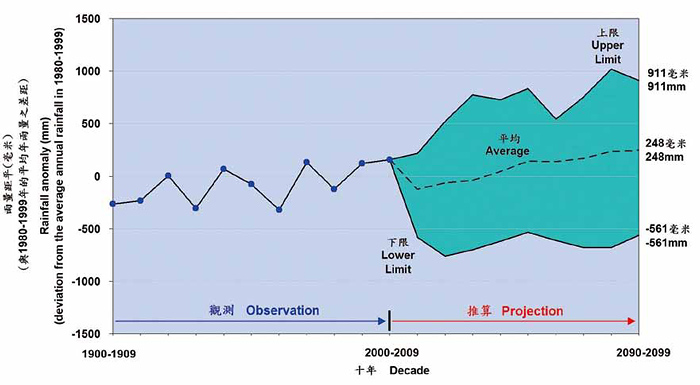HKO - Under the Same Sky 130 Years - Display Area 16
Display Area 16 : Looking to the Future - Challenges Brought by Climate Change and Extreme Weather
Introduction of Display Area
Climate change over the globe is indisputable, evidenced by reports of record-breaking high temperatures and extreme weather in various parts of the world. The Arctic sea ice has also melted to a record low. According to studies by the Observatory, the number of "very hot" days and "hot nights" are expected to increase signiantly in Hong Kong during the twenty-st century while the annual number of "cold days" will drop. With continuous rise in global sea levels, the risk of coastal oding brought by storm surges is also expected to increase.
In addition, the variability of rainfall has become greater. While there are chances for rainstorms in some areas of the world to become more severe, droughts in other areas may become more critical, affecting water supply and food production. In Hong Kong, more intense rainstorms and returning droughts would bring greater challenges to our infrastructures and water resources.
To combat climate change, the Observatory compiled its st publication on climate change in Hong Kong in 1988. In 2004, the Observatory announced for the st time the study results on climatic projections for Hong Kong in the coming century. Apart from research work, the Observatory also endeavours to promote public education to enhance public awareness and understanding of climate change.
Observatory's temperature projection for Hong Kong in the twenty-st century.
(Based on Intergovernmental Panel on Climate Change Fourth Assessment Report monthly mean data)

Observatory's rainfall projection for Hong Kong in the twenty-st century.
(Based on Intergovernmental Panel on Climate Change Fourth Assessment Report monthly mean data)

Satellite pictures showing signiant melting of the Arctic sea ice in the summer, with its area of coverage reduced by a large extent from 1980 (top) to 2012 (bottom). (Photo courtesy of NASA, USA)

Projections by world climate models show that mean annual rainfall will rise on a global scale towards the end of this century, with big differences seen in various parts of the world. The map shows the northern-hemisphere summer rainfall pattern near the end of this century. (Photo courtesy of the Intergovernmental Panel on Climate Change)
